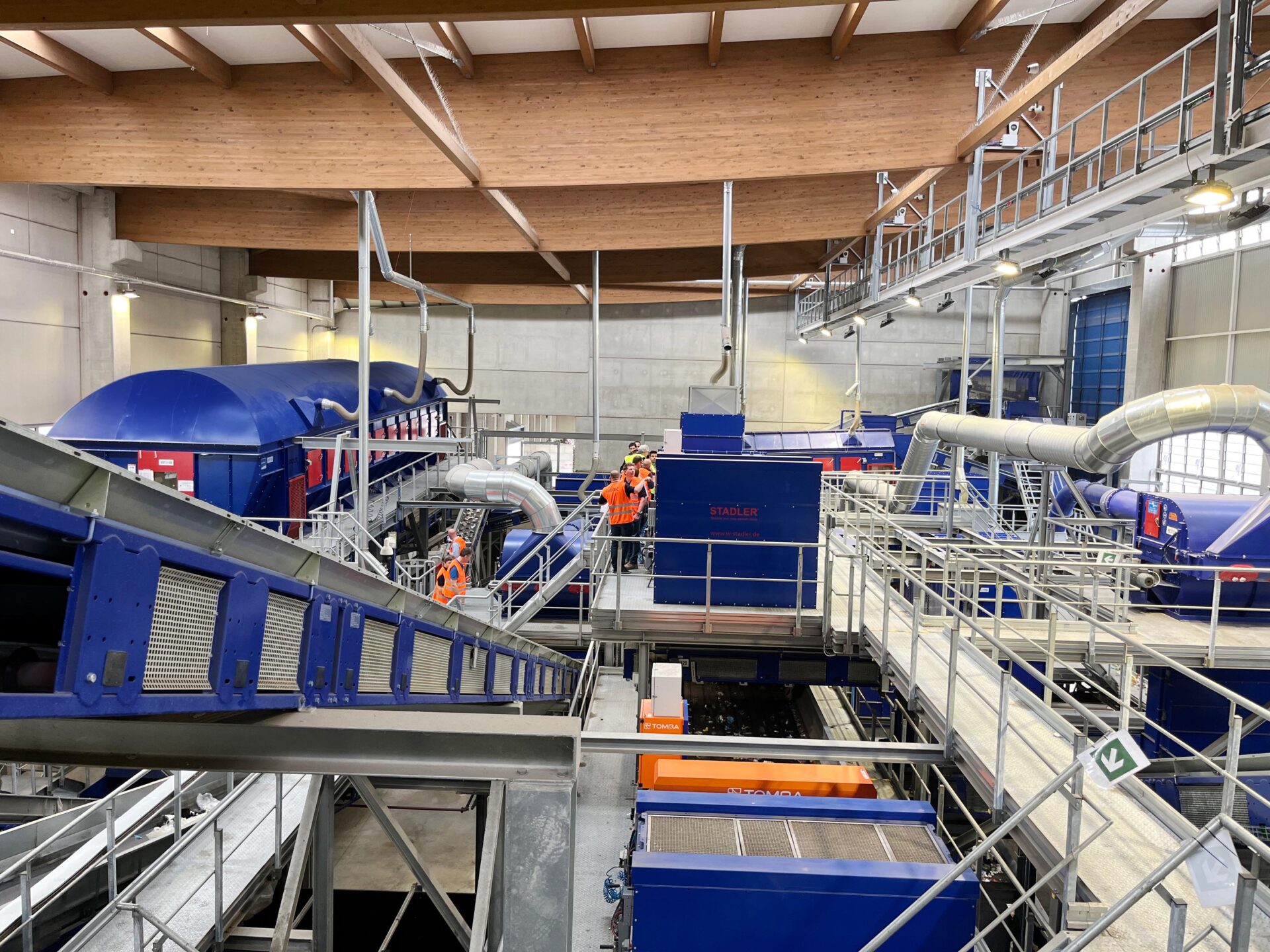Iren, a multi-utility company in the north-west of Italy, is committed to a sustainable development model. It is one of the country’s main operators in the sectors of electricity, gas, district heating, management of integrated water and environmental services, and integrated solutions for energy efficiency. Through its environmental management company, Iren Ambiente, it plays a leading role in the circular economy by transforming waste into resources for the territory, closing the loop.
Iren has called on Stadler’s expertise for the design and installation of its Circular Plastic sorting plant – the largest in Italy. Located in Borgaro, near Turin, the new facility has an annual capacity of 100,000t. It integrates innovative solutions and advanced technologies to automatically sort 17 types of polymers and plastics, aluminium, and ferrous materials, ensuring maximum operational flexibility. This process delivers high-quality output, returning up to 80% of input materials to the recycling loop.
The Circular Plastic plant starts the process by separating the incoming material into three streams: bulky, medium size and fines.
The bulky material is screened with a special model of Stadler STT5000 ballistic separator, which ensures a better separation of film, then separated in a sorting cabin.
A distinguishing feature of the plant is the line dedicated to fine material after it is extracted by a Stadler trommel screen and ballistic separators. On this line, the fines are processed through a magnet separator and eddy current system to extract all the ferrous material and aluminium, then treated with a Stadler trommel screen and two optical separators to recover small plastic components such as bottle caps and other valuables.
The medium-sized material is split into two lines, each with a Stadler STT5000 ballistic separator, to sort the 2D and 3D material, while fines are sent to the dedicated fines line. The 2D stream goes through 6 optical separators to sort films into PP, PE and bio-film.
The 3D stream is cleaned of ferrous materials, then separated with optical sorters into clear PET, blue PET, coloured PET, opaque PET and trays. Further optical sorting ensures additional automatic quality control and cleaning of these primary products. In parallel, HDPE, PS and PP fractions are sorted on a second line. The output of the two 3D lines comes together for the extraction of clean aluminium particles.
All residual materials from the 2D and 3D lines go through a second sorting process, fed into optical sorters to recover any valuable materials left, which are sent to an advanced bottle recovery line, which is another stand-out feature of the Circular Plastic plant. It is equipped with a bottle opener, a dedicated ballistic separator and a material dosing system to guarantee maximum recovery.
An advanced load cell system has been installed for monitoring the quantity of incoming material and the quantities of the different materials stored in the bunkers ready for baling. This enables the operator in charge of the baling presses to keep track of exactly how much material is contained in each bunker and produce a precise number of bales for each product.
A new local maintenance system provides operators with a mobile panel that they can connect in each area of the plant to control all the machines in the section. Detection sensors on motors facilitate data collection and analysis for preventive machine maintenance. In addition, the entire plant can be monitored remotely with dedicated software that collects and records more than 1,000 signals at a time to generate periodic reports valuable for predictive maintenance.
The sorting cabin is equipped with an efficient air conditioning system that maintains a comfortable working environment year-round, providing 10 air changes per hour with fresh air from outside.A











